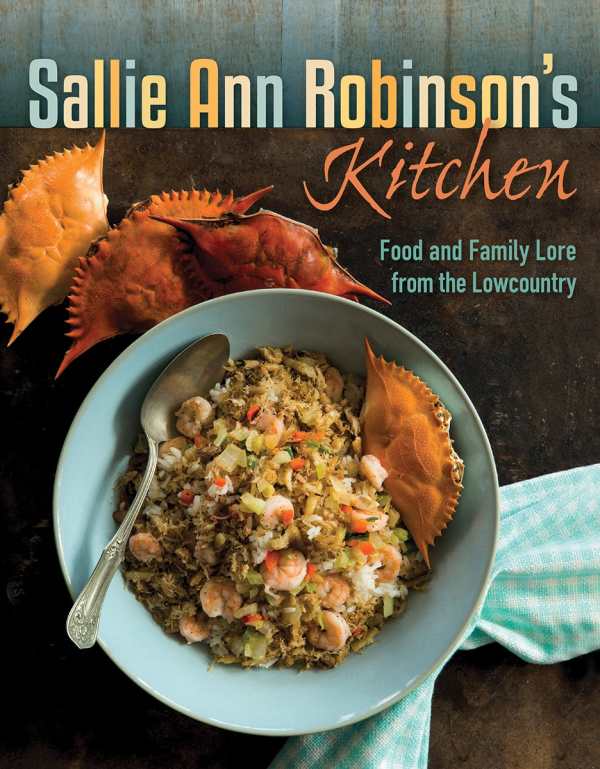Sallie Ann Robinson's Kitchen
Food and Family Lore from the Lowcountry
Sixth generation Gullah and Native American Daufuskie Island native Sallie Ann Robinson’s heartfelt cooking compilation is studded with history, folklore, and color photos of the long-isolated South Carolina sea island, personalized with cherished memories of a “Beenyah” childhood rich in tradition.
Growing up in a large farm family without running water or electricity meant that Robinson did many chores, helping to gather and prepare food and take care of the livestock. She recalls these as “really the best of times” with the rewards of delicious meals. Her recipes reflect this connection to the land and are rooted in the freshest seasonal ingredients from the garden and the sea. Distinctive dishes featuring duck, turkey, rice, and shellfish further distinguish this from other Southern cookbooks.
Some recipes have fast preparation times, while others rely on “cooking a long pot” so that cooks can “stay nearby to give it the love it needs.” These are valuable contributions to American culinary history, recording an oral tradition of family recipes and kitchen wisdom passed down from many ancestors. Robinson infuses a good bit of local dialect to flavor the book, along with a helpful glossary of Gullah words and phrases.
Recipes are interspersed with detailed and lyrical reminiscences about Grandmomma Blossom’s garden wisdom, summers spent fishing and crabbing, and the rituals of the annual hog slaughter. Robinson has fond memories about being a sixth grader when Pat Conroy spent a year teaching at Daufuskie Island’s one-room schoolhouse, recorded in his book The Water is Wide. Other essays touch on harsher topics like slavery and bigotry, from which Robinson’s family and community were able to shield her during her youth.
Sallie Ann Robinson’s Kitchen is a book to treasure as both a cultural history resource and a tempting cookbook. Robinson attracts with her recipes, but sets the hook with her immersive descriptions of a unique American place and time, noting that “One of the best ways to remember history is to taste it.”
Reviewed by
Rachel Jagareski
Disclosure: This article is not an endorsement, but a review. The publisher of this book provided free copies of the book to have their book reviewed by a professional reviewer. No fee was paid by the publisher for this review. Foreword Reviews only recommends books that we love. Foreword Magazine, Inc. is disclosing this in accordance with the Federal Trade Commission’s 16 CFR, Part 255.

